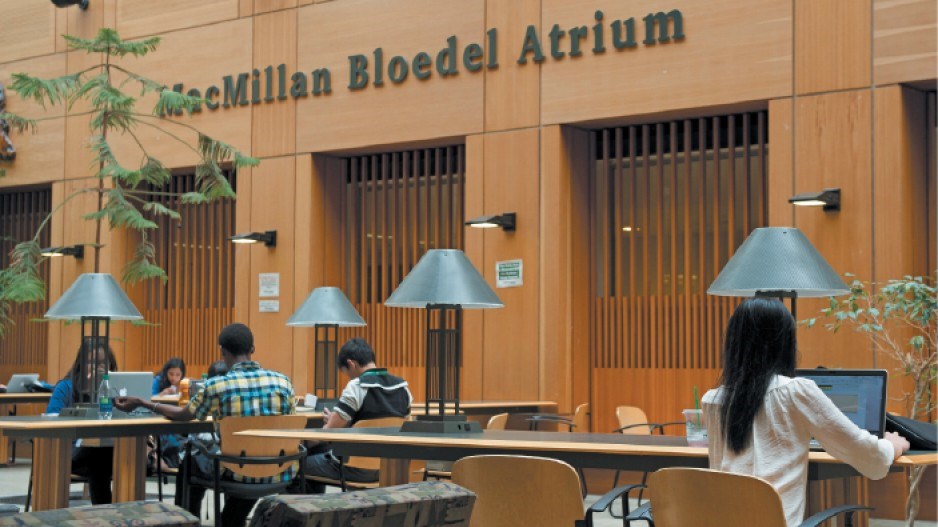BC students expect to face the highest debt in the country upon graduation, and student advocates are warning that the high cost of education is affecting the province’s economy.
“When we graduate with this massive amount of debt, it keeps us from starting our own businesses, buying houses, starting families, being active and engaged citizens in the economy,” Katie Marocchi, chairwoman of the B.C. chapter of the Canadian Federation of Students, told Business in Vancouver.
BMO’s annual student survey found that B.C. students expect to owe an average of $35,000 when they leave school. That compared with the national average of $27,000.
On the heels of that survey, CIBC released two reports revealing the high cost of education. One showed that B.C. parents are the most likely to delay retirement to help fund their children’s university education.
The other found that Canadian students might struggle to pay down debt once they graduate: Canada has above-average education costs compared with other members of the Organisation for Economic Cooperation and Development, but “the share of Canadian university graduates who make less than half the national median income is the largest among all OECD countries,” the report said.
It’s not that B.C. students pay higher tuition: B.C. falls in the middle of the pack when it comes to national tuition rates. The average tuition in B.C. was $5,015 in the 2012-13 school year, while students in Ontario paid an average of $7,180, according to Statistics Canada. But the high cost of living in B.C.’s urban areas, and especially the Lower Mainland, is a major contributor to the rise in debt, said Pat Dejong, a personal banker with BMO who works with students and their families on the North Shore.
University of British Columbia family policy professor Paul Kershaw agrees with that assessment. In addition, Kershaw said wages for young people across Canada, and especially in B.C., haven’t kept pace with inflation. Therefore, that summer or part-time job will make less of a dent in education costs.
“If you adjust for inflation across the country, wages are down about $3 an hour for the typical 25- to 34-year-old ... [but B.C.] wages are down about $4 an hour for the typical 25- to 34-year-old, compared to a generation ago,” said Kershaw. “And housing prices [in B.C.] are up 150% after adjusting for inflation.”
While tuition has been kept in check by the B.C. government’s 2%-per-year tuition freeze that has been in place since 2005, that freeze only applies to certain programs, said David Eby, the BC NDP’s advanced education critic. Universities can set their own tuition rates for new programs and for professional programs like medicine and law.
Government student loans also do not fully cover the entire cost of post-secondary education, leading students to turn to private lenders to cover the gap.
The Ministry of Advanced Education dismissed the BMO survey in an email, saying “a national survey of just 602 post-secondary students is not truly representative of students in B.C., much less Canada.” The ministry also pointed to the 23,000 students who were at risk of defaulting on their student loans last year and took advantage of the provincial government’s loan reduction program, at a cost of $41 million.
That money could have been better spent, argued Eby.
He said in Australia student loan payments are based on graduates’ after-tax income.
“Either you bring your student loan program up to speed so students can manage this additional debt so it doesn’t cripple them from getting a car so they can get to work or from getting a credit card or you subsidize students at the front so they don’t have to borrow money.”




